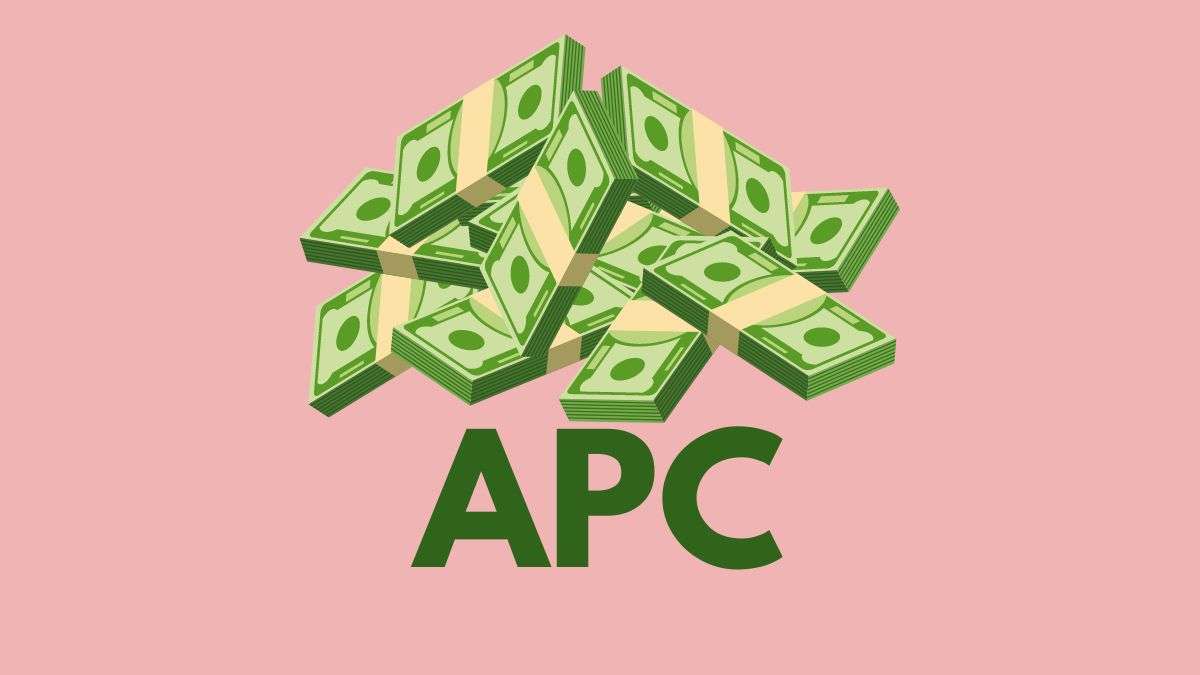Table of Contents
- Introduction
- Understanding Article Processing Charges
- Why do Journals Charge Author Fees?
- Breaking Down the Numbers
- Determining Article Processing Charges: What’s Fair for Author?
- Conclusion
Introduction
Determining the article processing charges or APCs is crucial in running an academic journal. The economics of academic publishing is a complex and often controversial topic. At the heart of the issue is how scholarly journals fund their operations – and one key component is author payments in the form of APCs.
As we’ll explore in this writing, understanding what drives APC pricing and whether current models are fair for authors has important implications for the accessibility and integrity of academic research. In this introductory section, we’ll define some key terms and highlight why delving into this issue matters.
Academic publishing involves significant costs on the journal side, including managing peer review, editing, production, distribution, archiving, and discovery of articles. Traditionally, these costs were covered by subscription fees charged to readers and institutions.
However, with the rise of open access publishing, many journals now levy APCs to authors upon acceptance to make the final published articles freely available to all. What constitutes a reasonable APC is a complex question with ethical dimensions.
As discussed, pricing can impact who can afford to publish their work. Striking the right balance sustains journals while serving academic authors across institutional backgrounds. Shedding light on how APCs are determined thus helps stakeholders make informed publishing decisions. It also opens up alternative models, bringing us closer to fairly disseminating academic knowledge.
Academic Journal Economics and Author Payments
This section has introduced the concept of article processing charges as a key component of the economics underlying academic journal publishing today. We’ve set the stage for discussing what factors are involved in APC pricing models, what impacts high charges can have, and how understanding these dynamics better serves academic authors while sustaining access to research.
As highlighted, pricing pressures faced by journals must be balanced with equitable publishing opportunities. Shedding light on what drives APCs and their implications allows authors and institutions to make informed decisions when choosing where to submit research. It also paves the way for alternative funding models that widen accessibility.
By delving into the complex terrain of academic publishing economics throughout this blog post, we hope to empower stakeholders and progress toward disseminating scholarly knowledge fairly.
Understanding Article Processing Charges
Article processing charges refer to fees that some academic journals charge authors to publish their work. These fees help cover the costs of managing peer review, editing, producing, hosting, and distributing scholarly articles.
The Role of APCs
Many academic journals rely on APCs as a primary means of sustaining their operations. The revenue from author fees supplements other funding sources and allows journals to provide quality publishing services. Some key roles that APCs play include:
- Covering labor expenses for editors, reviewers, and production staff
- Funding online hosting platforms and distribution networks
- Supporting marketing and discoverability efforts
- Enabling innovations in formats, multimedia, and metrics
Influencing Factors on APC Amounts
The amount that a journal charges authors can vary widely depending on factors like:
- The prestige and impact factor of the journal
- Whether the journal is open access or subscription-based
- The costs involved in editorial and production workflows
- Whether discounts are offered based on article type or author demographics
More influential journals charge higher APCs due to greater readership and citations for published articles. However, some journals aim to balance affordability and quality.
Contrasting Article Processing Charges with Subscription Fees
While authors pay APCs, subscription fees are typically paid by institutions or individuals to access journal articles. Many subscription-based journals do not charge authors directly but rely on subscriber revenue. However, in open access models, the articles are freely available online to all readers while authors pay APCs to make this accessibility possible.
Why do Journals Charge Author Fees?
Journals charge author fees for a few key reasons. First and foremost, these fees help cover the costs associated with editing, producing, and distributing academic articles. The peer review process, copyediting, layout services, online hosting, and printing expenses add up, and journals rely on revenue streams like author fees to sustain operations.
Covering Publishing Costs
The work that goes into publishing an academic article – from initial submission to final publication – requires significant time, effort, and resources from journal editors, reviewers, and support staff. Author fees help pay for these vital publishing services. Without this revenue, many journals would be unable to function.
Potential Impacts on Quality and Accessibility
Critics argue that author fees could negatively impact article quality and limit less affluent researchers from publishing. However, many journals offer fee waivers for authors from low-income countries or those facing financial hardship. Some data also suggest that ability-to-pay does not strongly correlate with article quality. Still, ensuring equitable access for authors across backgrounds remains an ethical consideration for journals charging fees.
Equity and Affordability Concerns
High author fees can certainly deter submissions from those with limited research funding. This raises issues of fairness and equal opportunity that journals must grapple with. Providing discounts or waivers, securing grants to cover fees, establishing differential pricing based on country income levels, and containing costs are some ways journals work to address affordability barriers.
Breaking Down the Numbers
Article processing charges can vary widely depending on the journal and publisher. Here’s a detailed look at the range and factors influencing article processing charges:
- General range of APCs: APCs can range from as little as USD 8 to as high as USD 9,900, with Elsevier’s APCs falling within this spectrum, specifically between approximately USD 150 and USD 9,900, excluding tax. The global average per-journal APC is reported to be USD 1,626.
- Factors influencing APC amounts: The reputation and impact factor of journals often dictate the level of APCs, with higher impact metrics correlating with higher fees. Commercial publishers charge more than journals published by societies, universities, or scholars/researchers. Hybrid journals, which combine subscription-based content with open access for certain articles, generally charge higher APCs than fully open access journals.
- Variability and transparency: While some journals apply a single fee for all articles, others may have variable costs based on article type, length, or additional services like an expedited review or language editing. Publishers like Elsevier display their APC price list on their websites and journal homepages, aiding transparency.
- Waivers and discounts: Some publishers offer waivers or discounts for authors from developing countries or those experiencing financial hardship. However, waivers are limited, and there are concerns about the criteria used to qualify for them.
- Impact on publishing equity: High APCs can limit the ability of less affluent institutions and researchers, particularly those from developing countries, to publish their work. This has raised concerns about inequities in the academic publishing landscape.
- Comparison with traditional publishing fees: Traditional publication fees have existed since at least the 1930s and different academic publishers have varying fees. For example, the journal Nature has been known to charge up to €9500 (USD 10,851 USD).
- Additional costs: Beyond the standard APCs, there may be other fees such as submission fees, overlength fees after exceeding a certain number of pages, and color fees for figures in print journals.
- Funding APCs: Authors typically fund APCs through research grants, library funds, personal assets, or institutional support. Some funding bodies, like Horizon Europe, do not cover APCs for hybrid open-access journals.
In summary, APCs are a significant factor in academic publishing, with a complex structure influenced by journal reputation, publisher type, and the need to cover various publishing costs. The wide range of fees reflects the diverse landscape of academic journal publishing, with ongoing debates about the implications for access to publishing and the overall quality of the scholarly communication system.
Determining Article Processing Charges: What’s Fair for Author?
Determining fair author payments for academic journals involves weighing several ethical considerations. On the one hand, journals incur actual costs for managing the peer review process, editing submissions, publishing accepted articles, and maintaining their online platforms. These activities require staff time and resources.

At the same time, with high APCs, some authors’ ability to publish may be limited if they lack funding support from their institutions. There is an access equity issue if only well-funded researchers from elite universities can afford to disseminate their work.
Sustaining Quality While Ensuring Affordability
Journals must strike a balance between covering expenses to produce high-quality publications while not overburdening authors. Some strategies include:
- Offering APC waivers for authors from underrepresented groups or low-income countries
- Establishing differential pricing based on the author’s ability to pay
- Capping APC increases and maintaining transparency about where the money goes
Journals may be able to reduce production costs through automation, volunteer editorial boards, and other efficiency measures. However, quality should not be sacrificed purely to lower APCs.
Alternative Funding Models
Rather than relying solely on author payments, academic publishers could explore funding models such as:
- Institutional subscriptions or memberships that cover APCs for affiliated researchers
- Grants from governments, foundations, or non-profits earmarked for open access publishing
- Partnerships with scholarly societies that can provide financial support to their member journals
These options spread the cost burden across multiple institutional stakeholders invested in disseminating research findings. This enhances equity and financial sustainability without sacrificing quality or rigor in the peer review process.
Conclusion
In summary, this article has explored several key aspects in determining the article process charges for an academic journal. We discussed what article processing charges (APCs) are and the reasons journals charge these fees to authors, including covering publishing costs. We also examined considerations around determining fair author fees and alternative models like institutional funding.
A few key takeaways:
- APCs vary widely, with reputable journals sometimes charging thousands of dollars.
- Charging authors is controversial but often necessary for journals to sustain operations.
- There are equity concerns regarding authors from less affluent backgrounds struggling to pay high APCs.
- More transparency and dialogue are needed around reasonable author fee pricing models.
As authors and readers, we should care about the underlying economics of scholarly publishing. Before submitting to or accessing a journal, consider inquiring about its author fees and ability to waive charges if needed. Support moves towards more equitable open access through institutional repositories and policies when possible.
